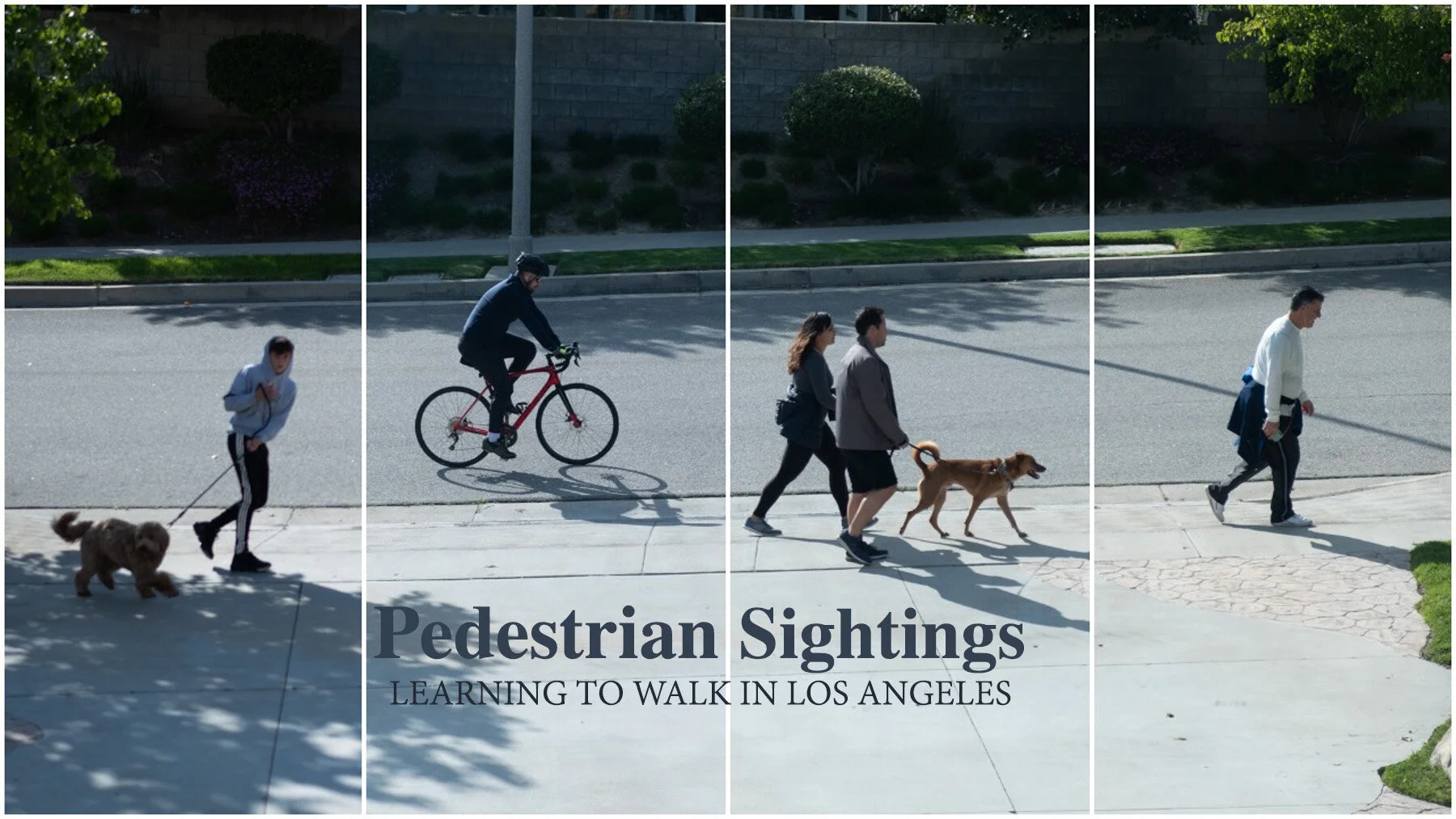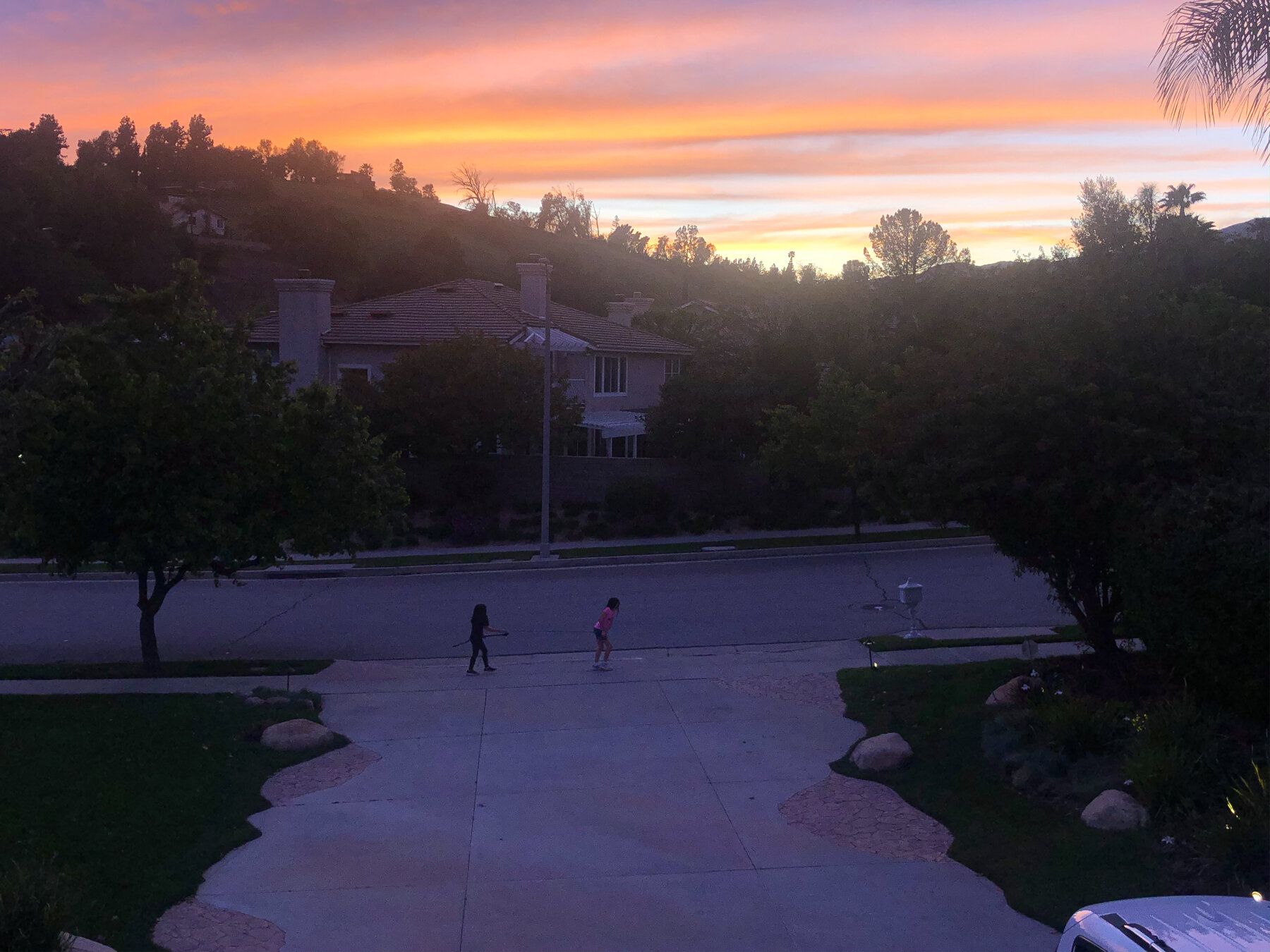
Photos & Text By Mia Harriz
Cooped up and desperate to do something while staying safe during the pandemic, Los Angelenos have discovered the fine art of walking, turning neighborhood sidewalks normally devoid of life into something oddly social in a time of social distancing. This is astonishing in a city so thoroughly devoted to the automobile where pedestrian sightings in residential neighborhoods are considered downright strange.
The shelter in place order has rendered the car useless given that Los Angelenos have no place to go. Freeways are ghostly empty as the places which drivers commute to are shuttered. Other recreational areas such as beaches and trails have limited hours or are too crowded to practice safe social distancing. With nowhere else to roam besides their own neighborhoods, Los Angelenos, in large numbers, are discovering the sidewalks and it’s a cultural awakening.
“There are more people walking around than I’ve ever seen before,” said native Angeleno, Camille Shooshani.
Los Angeles has long been known as a city that drives. But that wasn’t always the case. Around 1900, Los Angeles had a strong system of trollies and trams that would ferry people around the then-small city. But by the 1910s, automobiles had started to crowd-out the role of public transport, fueled by an explosion in middle class income. Cars were seen as more convenient and reliable, and by the 1920s, were the preferred method of transportation. As the city’s population exploded after the first World War, new residents built their homes in less-expensive, far-out suburbs that were not tied to public transport. Such communities were made possible by cars, which allowed their owners to commute to work in the city’s center without relying on public transportation. The city quickly spread outwards and saw a corresponding drop in density. The combination of a preference for automobiles and an ever-sprawling city made it less feasible to build public transport, which in turn, fueled the prominence of automobiles.
Cars in Los Angeles are deeply rooted in a person’s identity. Not only do they stand as a symbol of wealth and class, but also one of personal taste and style. The type of vehicle you drive signals to others a sense of who you are and what you represent. Cars also become a sort of mobile home for Angelenos. The make, color, and items held by an automobile transform it from just a vehicle that brings the driver from one place to the next to an extension of the driver’s home, and moreover, an extension of the driver herself.
“My car is like my mini home,” said Jessica Leader, Los Angeles native. “It’s full of clothes, random items and memories.”
There is a certain peculiarity about pedestrian Los Angelenos. Their steps are robotic and their forms awkward. Pedestrians pass each other with stiff smiles and uncomfortable head-nods, as if admitting to one another their uncertainty. Angelinos, unlike New Yorkers, walk without destination. Instead of confidently commuting they seem to be timidly wandering.
“It’s actually kind of funny,” Shooshani said. “It’s like people don’t know what to do with themselves.”
Perhaps this discomfort is a product of the fact that most Angelenos are novice walkers. Perhaps, in due time, walking will come as naturally as driving.
“I never walked before the pandemic,” Leader said. “But now, I don’t think it’s something I’ll give up.”








